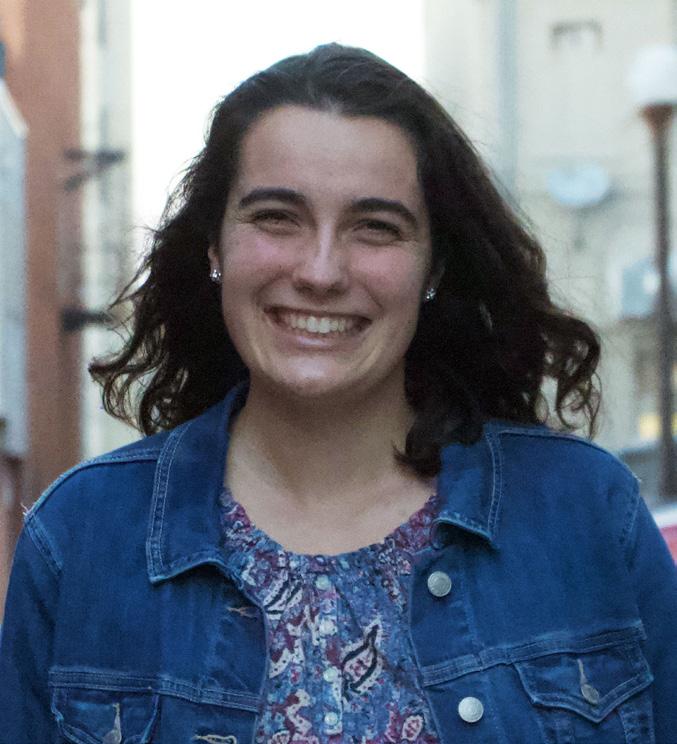
4 minute read
Reflections on Being a Christian Biologist (October 28, 2020) Jessi Labenski ‘22
from Agora Fall 2020
Reflections on Being a Christian Biologist
by JESSI LABENSKI, ‘22
Biology and Religion. Many people believe that these two things are in direct opposition to one another. After all, science and religion determine the truth in different ways. According to Einstein, “science can only ascertain what is, not what should be.” The scientific method is used to uncover facts about the natural world. Religion, on the other hand, sometimes forgoes science in order to explain the world in a spiritual, disembodied way. This is why there has been ongoing conflict between science and religion since the 1600s. Alongside this conflict has been the counter argument that religion and science are instead compatible, and complement each other well. In my own experience as a Christian biologist, I have found this to be true. The more biology that I come to understand, the more difficult it is for me to doubt the existence of God. The intricacies of life on our planet complicate my ability to believe that the universe was all created in one chance cosmic event.
During my time at Luther, I have been a student of biology and I have also been a lab assistant for Biology 151, our introductory biology class. Some of these experiences have shaped this view that I now hold. Being amidst the black walnuts, oaks, sugar maples, and black cherries in Hickory Ridge Woods is a humbling experience. I notice how each majestic tree has different characteristics that help the tree to fill a niche or role in the woods. For example, junipers with stringy dead branches surrounding their trunks grow only in areas with abundant sunlight. And, after examining macroinvertebrates from Dunning Springs, it is incredible that organisms so small can help us determine the health of the spring. Looking into the microscope, we see mini-shrimp that we call scuds, mayflies with their three delicate tails, and caddisflies with their rocky and sandy tubed backs. To LUTHER COLLEGE PHOTO BUREAU IMAGE BY ANNIKA VANDE KROL ‘19 me, this is an example of God’s divine hand in creating amazingly complex life at the microscopic level. Finally, we take time to study the evolution of antibiotic resistance in bacteria. It is impressive and frightening how quickly these bacteria can evolve to resist the antibiotics that we have created. Evolution is an ingenious process that allows organisms to survive and thrive. The evolution of new traits within a population may lead to a species filling a different role within the ecosystem. But humans have to accept that each species exists OCTOBER 28, 2020
Jessi Labenski

for a purpose, even if that purpose does not directly benefit humans. Author Marcus Borg asserts that the character of God is revealed in nature. Admiring nature is the surest way to reveal a glimpse of the divine on earth, since this is God’s creation. This is why Job encourages us to look to nature for the wisdom of God. “Speak to the earth, and it will teach you” (Job 12:8). Unfortunately, it is all too easy to move away from speaking to the earth when our population continues to grow and we continue to urbanize our living spaces. Now, the earth is trying to speak to us, and we have an obligation to listen. One out of every three species of plants and animals will be extinct within 50 years. Scientific predictions such as this one can help us to understand the consequences of human actions on our planet. These consequences could be rising temperatures, extinctions, rising sea levels, disease, or something entirely different. But along with predicting the consequences of our actions, we can also use science to guide our actions towards a path forward. Science provides an understanding of mechanisms to combat
these consequences so that we can do what is best for our planet. Yet, as I mentioned before, Einstein claimed that science is insufficient for telling us what should be. Science cannot tell us the sort of world that we should live in. This is why science and religion make such a remarkable pair. Religion is a means by which we are able to reimagine how the world is meant to be. People of God desire the world to be a place of compassion and love for all living things. To see the world as sacred is to see the nature of God in everything around us. We are called to preserve this sacredness of the natural world as people of faith. So look closely through the microscope or high into the trees, and use both your scientific and your spiritual wisdom to listen to the earth and strive to make a difference in the beautiful world around us. The Sending: The Crooked Tree Prayer May the crooked trees of this world continue to grow. May they continue to harbor wildflowers at their feet. May we learn acceptance and live and let live. May we each be fed in a way that does not cost the earth. May we learn to live gently and lightly, and not sweep away all before us when we are hungry. Let our hearts be filled and our demands slacken and fade away. Let us find the time to sit still and see all the parts of the crooked tree within us and accept it as it is. May all the parts of ourselves and in nature be witnessed and honored. Let us humans with all our crooked ways find a path to beauty that wild flowers might grow at our feet. Let it be so. Amanda C. Vesty










